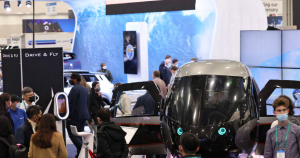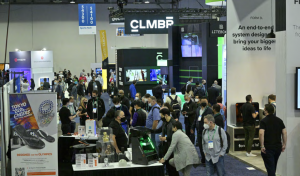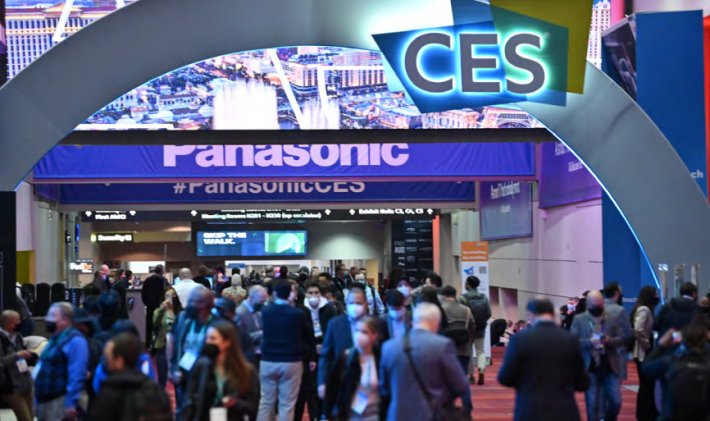The IoT M2M Council (IMC) is about to publish new research that indicates there’s a developing maturity among IoT adopters that might presage larger-scale technology deployments that have long been predicted. Keith Kreisher, IMC’s executive director, spoke to IoT Now to discuss the group’s findings and what they might mean for IoT moving forward. We found him on the eve of the Consumer Electronics Show, where the IMC is the exclusive partner for IoT programming and exhibitions at what might be the largest IoT event of 2023.
IoT Now: Keith, the IMC has been around since before the term IoT was popular. Now, on the eve of the group’s big coming out party at the large, post-covid CES show, talk to us about how the group gathers insights into the IoT sector and is that perspective unique in any way?
Keith Kreisher: That’s true – when we first started in 2014, the phrase machine-to-machine communication (M2M) was the term of choice. A lot has changed since then, but not the IMC’s perspective perhaps. We’ve been pushing the concept of IoT as the communications layer in the stack at CES for six years now. As a trade association, we have 25,000 rank-and-file members that are individual enterprise users, product makers and designers, and apps developers that qualify for membership as buyers of IoT technology. We know of no other group that qualifies IoT adopters on this kind of scale – that was true in 2014 and it’s still true today. We think that gives us unique perspective on the market and a platform to gather real statistically relevant data on what IoT buyers are planning.
IoT Now: What methods are you using to gather data from your rank-and-file, and what broad topical areas does the data cover?
KK: We have basically three methods to gather quantitative survey results – the newest is an updated version of our IoT Readiness Calculator (IoTRC), which is a survey tool that doubles as a lead generator for our Sustaining Member companies. The tool violates almost every rule of online surveying – it’s too long, too technical and it asks open-ended questions – but people who finish it are very serious about deploying IoT technology. It is, by far, the deepest data we’ve ever seen regarding a large number of different IoT projects. We ask about everything from, “Are you doing predictive maintenance?” to “What are your latency requirements?” to “Have you considered the need for data portability?”

We also survey our rank-and-file adopter members on a twice-yearly basis about IoT buying patterns, and I have to say, the data has been remarkably stable, particularly in regard to scale of deployments. Like the IoTRC, we ask about scale of projects, vendors used, biggest hurdles to success, but without the same depth. The IoT sector looks very small in that data, just as it did five years ago. Finally, we do ad hoc polling on subjects that we think are particularly timely, and that can yield some eye-opening results.
IoT Now: Let’s get into some specifics. Where do you think the IoT is on the technology growth curve? And do you have data to back that up?
KK: Analysts have been talking about billions of IoT devices in the field, with even more billions in investment getting those devices deployed, but I think it’s fair to say that the industry is still waiting for mass IoT to happen, where almost everything you can imagine is equipped with sensors and the ability to communicate. But we’re seeing data – particularly our IoTRC data – that would seem to indicate we’re dealing with a newfound maturity in the IoT sector, things that we haven’t seen before. I like to think that this indicates we’re on the precipice of much stronger growth, that perhaps the IoT sector is ready to realize the potential we’ve all been waiting for.
I can’t go into specific numbers because we’re still waiting to publish our report, and gathering new data as we speak, but for example, we’re seeing a greater number of people citing their corporate function as digital transformation than we’ve ever seen before. Likewise, a majority of the respondents we’ve got thus far say that they already have experience in deploying remote devices with connectivity. It’s an anecdotal comment, but our IMC Board of Governors was surprised to hear these things – they expected those numbers to be lower.
IoT Now: You’re not revealing actual numbers from the survey you’ve conducted, so what you’re relating sounds very anecdotal – is there more you can share?
KK: Of course. To provide a more tangible metric, we’ve got a much larger number of respondents saying that they intend to deploy more than 100,000 devices in the field at the maturity of their IoT projects, than we ever expected. Again, I can’t divulge the actual response rate, but it dwarfs the responses to a similar question on our bi-annual members survey by a factor of ten. I think it’s important to acknowledge that there may be some selection bias in the figures we’ve produced – the number of respondents willing to fill out a 25-question survey may be self-selecting for those that are very involved in IoT technology deployment. Still, I think it bodes very well.
IoT Now: Do you anticipate that an increased maturity and scale in the IoT sector will affect the actual kinds of technology that gets deployed? In other words, does larger scale automatically bring more technological advancements?
KK: Early returns seem to indicate that they will. For example, we asked what tasks they expect their IoT deployments to perform, and the possible answers ranged from simple monitoring on one end of the continuum, to predictive maintenance on the other end. The number that answered, all of the above, up to and including predictive maintenance, was almost a majority, which we thought was astounding. Only two years ago, I asked a particular high-end IoT software vendor about the number of deployments they did that included predictive maintenance, and they offered that it was less than 10%. Clearly, things are changing quickly.
Likewise, we saw a very large majority of respondents answer that they had high or medium requirements for IoT integration with backbone software systems like enterprise resource planning (ERP) and customer relationship management (CRM). This seems to indicate that IoT data is becoming mission critical in operations that are deploying the technology.

IoT Now: In addition to more advanced technology, are you seeing different behaviour patterns among IoT buyers? This must be affecting the technology sourcing process.
KK: Absolutely. It’s not directly related to the research that the IoTRC is generating, which I’ve been talking about up to now, but we’ve recently done a survey about the intersections between the IoT and embedded sectors. Again, we’re turning up some interesting numbers that we wouldn’t have expected that would show, at least anecdotally, that things are changing. Embedded technology, to my way of thinking, is all about sensors and actuators and therefore highly related to IoT connectivity these days.
We asked about the sourcing of embedded hardware and data plans – did respondents buy one of these things first, then the other? Or both at the same time? We found that, for a strong plurality, the answer was the latter. We take this to mean that more embedded engineers are thinking about connectivity much earlier in the process than we would have surmised. And that’s just one change in the buying process that we’re seeing from multiple sources.
IoT Now: Your data is pointing to a more mature IoT sector poised for growth, where fundamental changes have already occurred in technology sourcing. Is there any data among your various platforms that argues against this?
KK: Yes there is. For example, a plurality of respondents on the IoTRC lists cost reduction as their main objective. Another plurality says that one of their biggest hurdles to deploying IoT technology is a lack of industry business models. One would hope for and expect these numbers to be lower – they’re certainly countervailing data points. Our role at the IMC is to present and interpret the data that we gather as best we can, warts and all.
Comment on this article below or via Twitter: @IoTNow_OR @jcIoTnow










